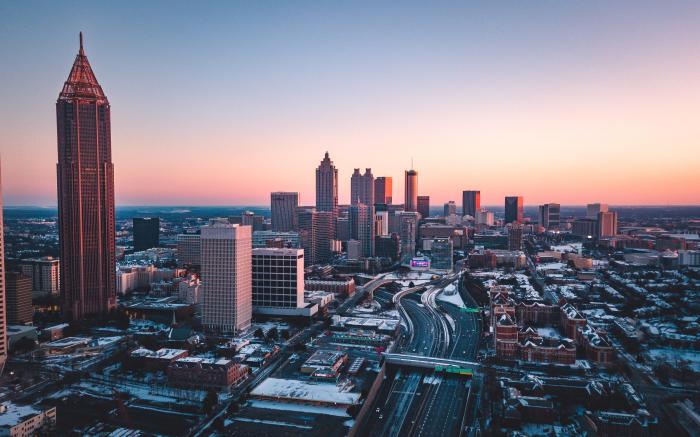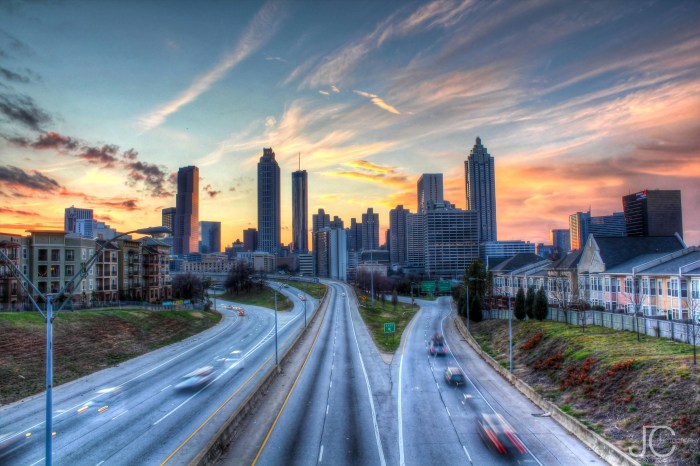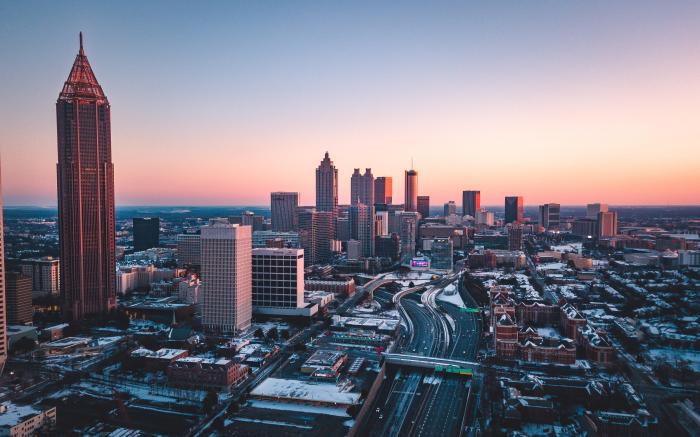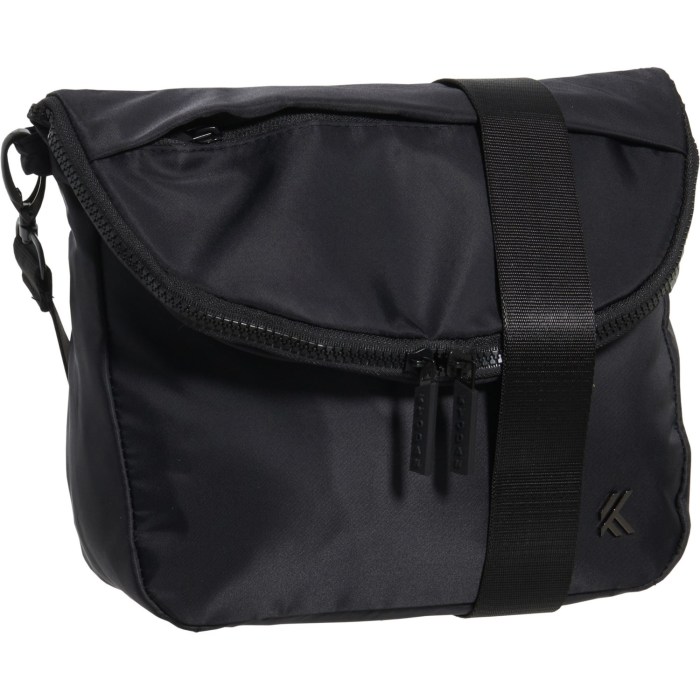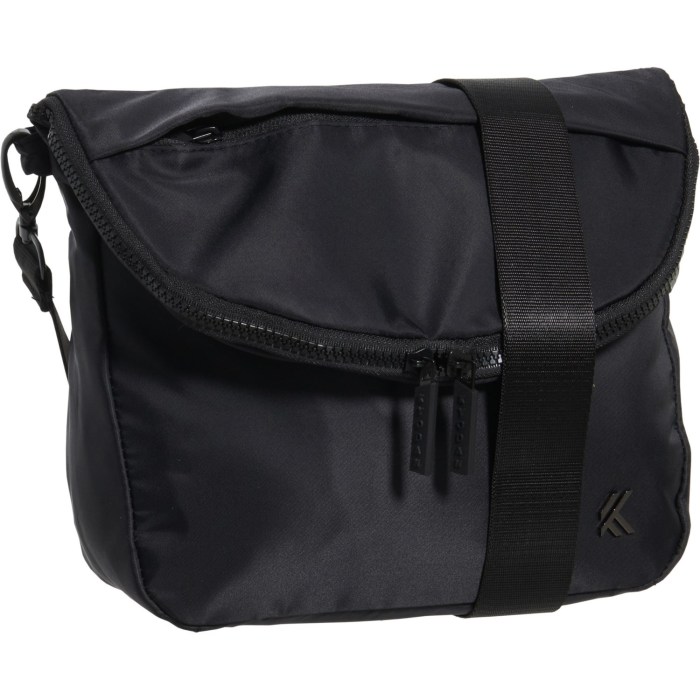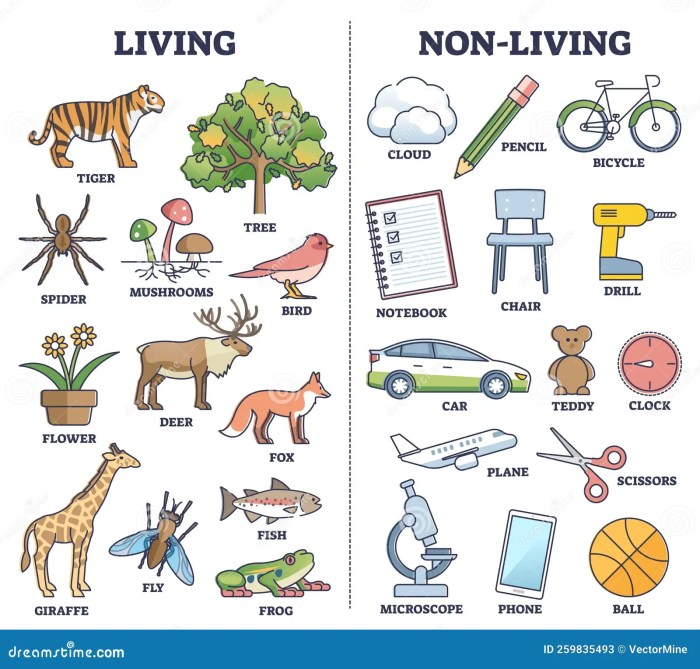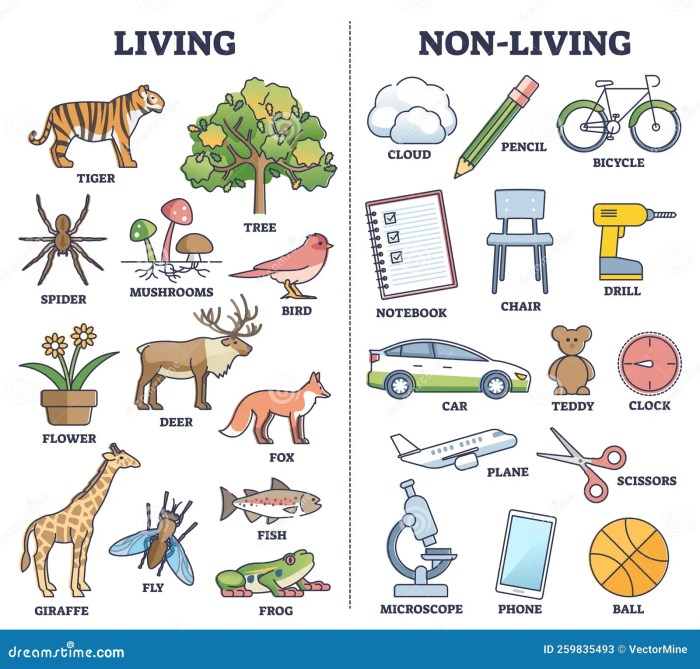Things to know before traveling to Melbourne: Prepare for a vibrant city bursting with culture, delicious food, and iconic landmarks. From understanding the best time to visit to navigating the city’s efficient transport system, this guide will equip you with everything you need for a memorable trip. Melbourne offers something for everyone, whether you’re a foodie, a history buff, or an adventure seeker.
This comprehensive guide covers everything from essential information like visa requirements and transportation options to detailed insights into accommodation, must-see attractions, and local food experiences. Discover the unique atmosphere of Melbourne, packed with surprises and ready to delight. Learn how to make the most of your time and budget in this thriving Australian metropolis.
Introduction to Melbourne
Melbourne, Australia’s vibrant second-largest city, is a captivating blend of European charm and Australian outback spirit. From its stunning architecture to its thriving culinary scene, Melbourne offers a unique experience for every visitor. Its rich history, combined with a progressive and cosmopolitan atmosphere, creates a city that’s both engaging and welcoming.Melbourne’s allure lies in its ability to seamlessly integrate historical significance with modern innovation.
The city’s distinct character is shaped by its European roots, particularly its Victorian era heritage, evident in its grand buildings and meticulously maintained parks. This legacy intertwines with a contemporary spirit, making Melbourne a dynamic hub for arts, culture, and innovation. The city’s vibrant atmosphere and welcoming nature are complemented by its extensive public transport, making it easily navigable for tourists and residents alike.
Historical Context and Landmarks
Melbourne’s history is deeply rooted in the 19th century gold rush, which transformed a small settlement into a bustling metropolis. Significant landmarks like the Flinders Street Station, with its impressive Victorian architecture, and Federation Square, a contemporary urban space that hosts cultural events, showcase this historical evolution. The iconic Royal Botanic Gardens, with its diverse plant collection, offer a serene escape amidst the city’s bustling energy.
The Melbourne Cricket Ground (MCG), a legendary sporting venue, has witnessed countless historical sporting events.
City Atmosphere and Vibe
Melbourne’s atmosphere is a harmonious mix of sophistication and casual friendliness. The city pulsates with a unique energy, driven by its passionate arts and culture scene, complemented by its vibrant cafe culture and renowned culinary experiences. The parks and laneways add a touch of tranquility, providing pockets of calm amidst the urban bustle. This blend of sophisticated elegance and relaxed camaraderie creates a distinctive Melbourne vibe, welcoming and engaging.
The city’s vibrant street art scene, and the diverse range of neighborhoods, from the trendy Fitzroy to the historic Docklands, further contribute to this distinctive ambiance.
Melbourne’s Culinary Scene
Melbourne is renowned globally for its diverse and innovative culinary scene. From Michelin-starred restaurants to cozy cafes, the city offers a wide array of dining experiences. This is further enhanced by the abundance of fresh produce available from local farms and markets. The influence of international cuisines, combined with local produce, creates a dynamic culinary landscape. This culinary diversity is reflected in the city’s numerous food festivals and markets.
The city’s love for food is also evident in the range of street food options and the impressive selection of local and international cafes.
Essential Information
Melbourne, a vibrant city brimming with culture and attractions, offers a fantastic travel experience. Understanding the practicalities of your trip, from optimal travel timing to navigating the city’s transportation network, is crucial for a smooth and enjoyable journey. This section provides essential details to help you plan your trip effectively.Knowing the best time to visit, the various transportation options, and the local currency will ensure a well-organized and stress-free trip.
Furthermore, understanding visa requirements will allow you to travel with confidence.
Best Time to Visit
Melbourne experiences a temperate climate, with pleasant weather throughout the year. However, the best time to visit for pleasant temperatures and fewer crowds is generally considered spring (September to November) and autumn (March to May). These seasons offer comfortable days for exploring outdoor attractions and events. Summer (December to February) can be hot and humid, while winter (June to August) brings cooler temperatures and potential for rain.
Major events like the Melbourne Cup (November) and various festivals can influence your choice of visit.
Transportation Options, Things to know before traveling to melbourne
Melbourne boasts an extensive and efficient public transportation system. This includes trains, trams, and buses, making getting around the city relatively easy. Ride-sharing services are also readily available. Knowing how to utilize these options is crucial for a smooth trip.
- Trains: The extensive train network connects various suburbs and central Melbourne, offering a fast and affordable way to travel between destinations. Frequent services provide reliable access throughout the day.
- Trams: The iconic trams weave through the city centre and beyond, providing a scenic way to see the sights. Their extensive network provides good coverage of central areas.
- Buses: Buses offer a comprehensive network, reaching locations not served by trains or trams. They are generally affordable and cover a wide range of areas.
- Ride-sharing: Ride-sharing services like Uber and taxis are available for flexibility, especially for reaching less-served locations or for immediate transport.
Currency and Exchange Rates
The Australian dollar (AUD) is the official currency of Australia, including Melbourne. Exchange rates fluctuate constantly, so it’s essential to check the current rate before your trip or utilize online tools for up-to-date conversion. Knowing the exchange rate is essential to estimate expenses.
Visa Requirements
Visa requirements for international visitors vary depending on your nationality. Check the official Australian Department of Home Affairs website for the most up-to-date and accurate information on visa requirements for your specific nationality. This ensures compliance with immigration laws.
Transportation Comparison
| Transportation Method | Cost | Speed | Convenience |
|---|---|---|---|
| Train | Generally affordable | Fast between suburbs | Efficient for longer distances |
| Tram | Affordable | Moderate speed within city centre | Scenic and convenient for city exploration |
| Bus | Affordable | Variable speed | Reaches various locations |
| Ride-sharing | Variable cost | Fast | Flexible and convenient, especially for short distances |
Accommodation Options
Melbourne offers a diverse range of accommodation options to suit every budget and preference. From luxurious hotels to budget-friendly hostels and the unique experience of Airbnb, finding the right place to stay is crucial for a memorable trip. Understanding the pros and cons of each type, along with their price range and proximity to attractions, can help you make an informed decision.Choosing your accommodation depends on your travel style and financial constraints.
A comfortable hotel offers a polished experience, while a hostel fosters social interaction among fellow travellers. Airbnb provides a unique opportunity to experience local culture and often offers more space and amenities than a traditional hotel room at a potentially lower cost. Considering these factors will lead to a more enjoyable and suitable stay.
Hotel Accommodation
Hotels offer a range of amenities, from swimming pools and spas to 24-hour room service and concierge services. This often translates to a higher price point compared to other options. The convenience of being centrally located, the luxury of in-room services, and the peace of mind of having a well-maintained space are among the primary benefits. However, hotel rooms can be more expensive and sometimes lack the local character that other options provide.
For example, a luxury hotel in the city centre might cost upwards of $300 AUD per night, while a mid-range hotel could be around $150 AUD.
Hostel Accommodation
Hostels are a popular choice for budget-conscious travellers and solo adventurers. They typically provide shared dorm rooms, often with private rooms available at a premium. The social atmosphere of hostels fosters interaction with fellow travellers and can be a great way to meet people. The shared spaces and common areas often feature activities and events. Hostels are generally more affordable than hotels, with dorm beds often starting around $30-50 AUD per night.
However, the shared bathroom and dorm room environment may not be ideal for everyone.
Airbnb Accommodation
Airbnb provides a platform for finding unique and often more affordable accommodations, ranging from apartments and houses to rooms within private homes. Guests have the opportunity to experience a more local environment and potentially enjoy more space and amenities than a hotel room. The prices vary greatly depending on the location, size, and amenities of the listing. For instance, a studio apartment in a suburb might cost around $100-200 AUD per night, while a larger house in a more central location could cost significantly more.
This flexibility in accommodation type and location is a significant advantage, although it may lack the standardised service levels and amenities of a hotel.
Accommodation Comparison Table
| Accommodation Type | Price Range (AUD) | Proximity to Attractions |
|---|---|---|
| Luxury Hotel (City Centre) | $300+ | Excellent |
| Mid-Range Hotel (City Centre) | $150-$250 | Good |
| Hostel (City Centre) | $30-$50 (dorm) | Good |
| Airbnb Apartment (Suburb) | $100-$200 | Variable |
| Airbnb House (City Centre) | $200+ | Good |
Must-See Attractions
Melbourne boasts a vibrant mix of historical landmarks, cultural gems, and natural beauty. From iconic architecture to bustling markets, the city offers a rich tapestry of experiences for every visitor. Exploring these attractions provides a deeper understanding of Melbourne’s unique character and heritage.Melbourne’s attractions cater to diverse interests, allowing visitors to delve into its history, culture, and natural wonders.
Each site offers a glimpse into the city’s evolution, from its colonial past to its modern-day dynamism.
Planning a trip to Melbourne? Definitely check out the vibrant cafe culture and fantastic street art. While you’re there, you absolutely must experience the incredible Handshake Bar in Mexico City, widely considered the best in North America and the world. handshake bar mexico city best in north america world But don’t forget to book accommodations in advance, especially during peak season, to avoid any last-minute headaches! Melbourne is a fantastic city to explore, but remember to be prepared.
Iconic Landmarks
Melbourne’s iconic landmarks are testaments to its rich history and architectural prowess. These structures often serve as focal points for city life, offering opportunities for both photo opportunities and historical immersion.
- Federation Square: This vibrant public space is a hub of activity, hosting events, performances, and exhibitions throughout the year. Its modern design contrasts with the surrounding historic architecture, creating a dynamic urban landscape. It is open 24 hours, free to enter.
- Melbourne Cricket Ground (MCG): The MCG, a globally recognized sporting icon, has hosted numerous international sporting events. Its grandeur and historical significance are undeniable. Opening hours vary depending on events, with general access possible for tours and exhibitions. Admission fees for tours and events vary.
- Royal Botanic Gardens: These gardens showcase the beauty of Australian flora and provide a tranquil escape from the city’s bustle. The gardens offer a glimpse into the country’s unique natural heritage. Opening hours are generally daily from sunrise to sunset. Entry is free.
Cultural Destinations
Melbourne’s cultural destinations showcase the city’s artistic spirit and diverse community. These attractions often celebrate the creativity and innovation that define Melbourne’s identity.
- National Gallery of Victoria (NGV): The NGV houses an extensive collection of Australian and international art. It provides insight into the evolution of art from various eras and cultures. Opening hours vary by gallery, and admission fees apply. Check the official website for details.
- ACMI (Australian Centre for the Moving Image): This centre celebrates film, television, and digital media. It offers a comprehensive look at the history and development of these art forms in Australia. Opening hours vary and admission fees apply.
Top Attractions Overview
This table provides a concise overview of some of Melbourne’s top attractions, including their descriptions, opening hours, and admission fees.
| Attraction | Description | Opening Hours | Prices |
|---|---|---|---|
| Federation Square | A vibrant public space with events and exhibitions. | 24 hours | Free |
| Melbourne Cricket Ground (MCG) | A globally recognized sporting icon. | Variable, dependent on events. | Variable, dependent on tours/events. |
| Royal Botanic Gardens | Showcases Australian flora. | Sunrise to sunset | Free |
| National Gallery of Victoria (NGV) | Houses Australian and international art. | Variable, by gallery. | Apply |
| ACMI (Australian Centre for the Moving Image) | Celebrates film, television, and digital media. | Variable | Apply |
Food and Drink Experiences
Melbourne’s culinary scene is vibrant and diverse, reflecting the city’s multicultural heritage. From iconic laneway cafes to Michelin-starred restaurants, there’s something to satisfy every palate and budget. The city boasts a strong emphasis on fresh, local produce, contributing to a consistently high quality of food.The city’s food culture extends beyond the dining experience itself. Melbourne is a city of food festivals, markets, and pop-up restaurants, creating a dynamic and exciting atmosphere for foodies.
It’s not just about eating, it’s about experiencing the city’s unique approach to food.
Popular Food and Drink Options
Melbourne offers a wide range of popular food and drink options, catering to various tastes and preferences. Street food, casual cafes, and fine dining establishments are all readily available, providing diverse experiences for visitors. This ensures a wide variety of choices for every type of visitor.
- Coffee culture is highly developed. Many cafes offer unique blends and brewing methods, providing a strong experience for coffee lovers. The quality of coffee is often considered exceptional.
- Melbourne boasts a diverse range of cuisines. From traditional Australian dishes to international specialties, there’s a wide array of options to explore.
- Fresh seafood is abundant, reflecting the city’s proximity to the coast. Many restaurants offer fresh catches prepared in a variety of ways.
- The city’s vibrant street food scene offers a taste of local specialties and global flavors, showcasing the city’s dynamic food culture.
Local Specialties
Melbourne is known for its unique and delicious local specialties, reflecting the city’s multicultural heritage and focus on fresh ingredients. These dishes often combine Australian produce with international culinary techniques.
- Meat pies, a classic Australian treat, are often found in bakeries and cafes throughout the city. These are usually made with a flaky pastry crust and a savory filling, often featuring beef or lamb.
- Fresh seafood, particularly from the nearby coastal regions, is often showcased in a variety of dishes. Seafood restaurants offer a broad range of options, from grilled fish to fresh salads.
- Australian-style barbeques and barbecues, showcasing locally sourced meats and produce, are common in many restaurants. These are frequently combined with sides like potato salad or corn on the cob.
Diverse Cuisines and Dining Experiences
Melbourne embraces a diverse range of cuisines from around the globe, providing visitors with a rich and exciting culinary journey. International restaurants cater to every taste, from authentic Indian curries to Japanese sushi.
- The city’s Italian restaurants offer a range of options, from traditional pasta dishes to pizzas.
- Vietnamese cuisine is another popular choice, offering a range of flavors and textures.
- The city’s Thai restaurants provide a wide selection of dishes, from curries to noodles.
Dining Districts and Their Characteristics
Melbourne has several dining districts, each with its unique characteristics and atmosphere. These districts cater to diverse preferences, from casual meals to fine dining experiences.
- Fitzroy: Known for its trendy cafes, independent restaurants, and live music venues. The area offers a variety of options, from brunch spots to intimate dining experiences.
- Southbank: This area is popular for its riverside location and vibrant atmosphere. The district offers a range of restaurants, including casual cafes and more upscale dining establishments.
- Collingwood: This district is known for its independent cafes and pubs, offering a casual and relaxed dining experience.
Food Options by Cuisine
| Cuisine | Popular Options |
|---|---|
| Australian | Meat pies, barbeques, seafood dishes |
| Italian | Pasta, pizza, risotto |
| Vietnamese | Pho, spring rolls, banh mi |
| Thai | Pad Thai, curries, noodles |
| Japanese | Sushi, ramen, tempura |
Activities and Experiences: Things To Know Before Traveling To Melbourne
Melbourne bursts with vibrant energy, offering a plethora of activities to suit every interest. From world-class sporting events to captivating cultural performances, the city caters to diverse tastes. Immerse yourself in the city’s artistic scene, explore its culinary delights, or simply relax and soak in the unique atmosphere. This section provides insights into the diverse experiences Melbourne has to offer.Melbourne’s calendar is packed with events throughout the year, especially during the peak tourist season.
This includes a wide range of cultural events, festivals, and performances, ensuring there’s always something exciting to discover. From iconic sporting matches to bustling street fairs, Melbourne’s vibrancy comes alive in countless ways.
Planning a trip to Melbourne? Beyond the iconic laneways and vibrant cafes, exploring the stunning national parks is a must. Knowing about accessible trails and facilities is crucial, especially if you’re traveling with mobility limitations. Check out this list of the best national parks for persons with disabilities to ensure a smooth and enjoyable experience for everyone.
This will definitely help you plan your Melbourne adventure!
Popular Activities and Entertainment
Melbourne boasts a diverse range of entertainment options. Live music venues, theaters, and comedy clubs provide a vibrant nightlife scene, while museums, galleries, and historical sites cater to cultural enthusiasts. Outdoor activities, like exploring parks and gardens, are also popular choices. The city’s sporting events, particularly during major tournaments, attract large crowds and provide a thrilling atmosphere.
Cultural Events, Festivals, and Shows
Melbourne is renowned for its vibrant cultural calendar. Major festivals, such as the Melbourne International Comedy Festival and the Melbourne Fringe Festival, attract participants and spectators from around the world. The city also hosts numerous music festivals, art exhibitions, and theater performances throughout the year. These events provide a unique opportunity to experience the city’s rich cultural tapestry.
Attend a performance by the Australian Ballet or the Melbourne Symphony Orchestra for a truly memorable experience.
Activities for Different Interests
Melbourne offers activities for diverse interests. Art enthusiasts can explore the city’s numerous galleries and art studios, while sports fans can catch a match of the Australian Rules Football (AFL) or cricket. Foodies can explore the diverse culinary scene, sampling everything from gourmet restaurants to local cafes. Nightlife options range from intimate bars to bustling nightclubs, accommodating various preferences.
For those seeking a relaxed atmosphere, numerous parks and gardens provide opportunities for picnics and leisurely walks.
Activity Details
| Activity | Duration | Cost | Location |
|---|---|---|---|
| AFL Game (Melbourne Cricket Ground) | 3-4 hours | $40-$150+ (depending on seating) | Melbourne Cricket Ground |
| Melbourne Museum | 2-4 hours | $25-$35 (adults) | Carlton |
| Federation Square | Variable | Free | Federation Square |
| Royal Botanic Gardens | Variable | Free | Royal Botanic Gardens |
| Laneway Bar Hopping | Variable (depending on number of bars) | $30-$100+ (drinks) | Various laneways throughout the city |
Note: Prices are estimates and may vary depending on the specific event or time of year.
Budgeting Tips
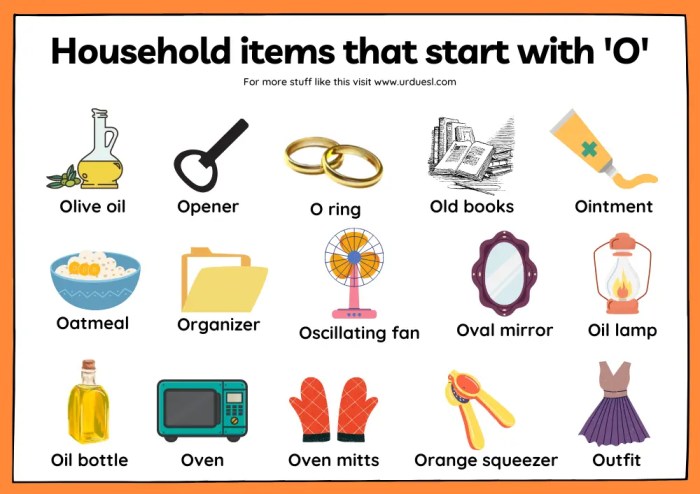
Melbourne offers a fantastic blend of experiences, but planning your budget is crucial for a smooth and enjoyable trip. Understanding the cost of accommodation, food, and activities in advance helps you allocate your funds effectively and avoid unexpected financial stress. This section provides practical tips for managing your expenses while exploring the vibrant city.Careful budgeting allows you to fully immerse yourself in Melbourne’s culture without worrying about overspending.
By understanding the various price points and exploring affordable options, you can maximize your experience while staying within your financial limits.
Accommodation Strategies for Saving Money
Budget-friendly accommodation options abound in Melbourne. Consider hostels, which offer a social atmosphere and often include communal kitchens, allowing you to save on meals. Alternatively, apartments or guesthouses can provide more space and privacy while keeping costs lower than traditional hotels. Look for deals and discounts, often available through online travel agencies or directly from accommodation providers.
These can significantly reduce your overall accommodation expenses.
Food and Drink Adventures on a Budget
Melbourne boasts a diverse culinary scene, catering to various budgets. Take advantage of affordable eateries like cafes and food trucks for quick and delicious meals. Explore local markets for fresh produce and affordable snacks. Utilize meal prepping to reduce daily food costs. Eating at local pubs often provides great value for money, offering a mix of traditional and modern fare.
Don’t overlook supermarket options; preparing some meals yourself can significantly lower food costs.
Dining Experiences: Affordable and Luxurious
Melbourne offers a delightful range of dining options to suit diverse tastes and budgets. For an affordable culinary experience, explore local cafes or food stalls, providing an authentic taste of the city’s culinary scene. Alternatively, you can enjoy high-quality meals at mid-range restaurants, providing a more substantial experience without breaking the bank. For a truly luxurious experience, consider upscale restaurants known for their exquisite cuisine and impeccable service.
These offer a memorable dining adventure.
Sample Itinerary with Estimated Daily Expenses
| Day | Activities | Accommodation | Food | Activities/Transportation | Total Estimated Expenses (AUD) |
|---|---|---|---|---|---|
| Day 1 | Arrival and Check-in | Hostel (AUD 50) | Breakfast (AUD 15), Lunch (AUD 20), Dinner (AUD 30) | Transport (AUD 10) | AUD 125 |
| Day 2 | Federation Square, Shopping | – | Lunch (AUD 25), Dinner (AUD 40) | Activities (AUD 20) | AUD 85 |
| Day 3 | Melbourne Museum, St Kilda | – | Breakfast (AUD 15), Lunch (AUD 20), Dinner (AUD 35) | Activities (AUD 25) | AUD 95 |
| Day 4 | Departure | – | Breakfast (AUD 15) | Transport (AUD 10) | AUD 40 |
| Total | AUD 345 |
This is a sample itinerary, and expenses can vary depending on your choices and preferences. Consider factors like transport costs, entry fees, and potential souvenirs when calculating your daily budget.
Safety and Security
Melbourne is a generally safe city for tourists. However, like any major city, it’s important to take precautions to ensure a smooth and enjoyable trip. Understanding local safety practices and emergency procedures can help you feel more secure and confident while exploring.Melbourne’s vibrant atmosphere and diverse population create a welcoming environment. Visitors should be mindful of their surroundings and take standard safety measures to minimize potential risks.
General Safety Precautions
Visitors should exercise common sense and vigilance, just as they would in any unfamiliar city. This involves being aware of your belongings, avoiding walking alone in poorly lit areas at night, and keeping valuables secure. Trust your instincts; if a situation feels uncomfortable, remove yourself from it.
Emergency Services
Knowing how to access emergency services is crucial. The emergency number in Australia is 000. This number connects you to police, ambulance, and fire services. It’s advisable to note this number and keep it readily accessible.
Local Laws
Familiarize yourself with basic Australian laws, particularly those concerning public behaviour. Respect local customs and regulations, and avoid engaging in any illegal activities. This will ensure a positive experience for yourself and those around you.
So, you’re planning a trip to Melbourne? Great! Before you jet off, it’s worth checking out the best things to do in Tunis during spring, especially if you’re interested in exploring the region further. For example, best things to do in tunis in spring offers some fantastic ideas for your itinerary, from exploring ancient sites to enjoying the vibrant local markets.
Remember to book flights and accommodation well in advance, and pack for all types of weather, even in spring!
Staying Safe in Public Areas
While Melbourne is generally safe, it’s essential to be mindful of your surroundings, especially in crowded areas. Avoid displaying expensive jewellery or electronics that may attract unwanted attention. Be cautious of pickpockets, particularly in busy tourist locations.
Staying Safe at Night
When travelling at night, choose well-lit and populated areas. Avoid walking alone in secluded or dimly lit streets. If you must travel alone at night, let someone know your itinerary and expected return time. Consider using ride-sharing services or taxis for safer transportation.
Safety Measures
- Keep your valuables secure, whether in a hotel safe, zipped pockets, or a money belt. Avoid displaying expensive items.
- Be aware of your surroundings, especially in crowded areas. Pay attention to those around you, notice suspicious behaviour, and avoid walking alone in secluded places at night.
- Report any suspicious activities to security personnel or the authorities immediately.
- Use reputable transportation services, such as taxis or ride-sharing apps. Avoid accepting rides from strangers.
- Download a translation app and learn basic phrases in the local language for easier communication.
- Inform someone about your itinerary, including your hotel location, planned activities, and estimated return time.
Getting Around Melbourne
Melbourne boasts a fantastic public transport system, making it easy to explore the city. From iconic landmarks to hidden gems, navigating Melbourne is a breeze with its efficient and comprehensive network. Whether you’re a seasoned traveler or a first-time visitor, understanding the various options will help you make the most of your trip.Melbourne’s transport system is user-friendly, with clear signage and well-maintained stations.
Its interconnected nature ensures seamless travel throughout the city and surrounding areas.
Transportation Options, Things to know before traveling to melbourne
Melbourne offers a variety of transportation options, each with its own set of advantages and disadvantages. Understanding these choices will allow you to select the most suitable method for your travel needs.
- Public Transport (Trains, Trams, Buses): This is the most economical and environmentally friendly option for getting around. It covers extensive routes throughout the city and its surrounding areas. Connections between different transport modes are seamless, with integrated ticketing systems making journeys simple and efficient.
- Taxis and Rideshares (Uber, etc.): A convenient alternative for quick trips, especially when carrying luggage or needing a direct route. However, fares can be higher compared to public transport, and traffic congestion can impact travel times.
- Cycling: Melbourne is a very cyclist-friendly city. Numerous bike paths and dedicated lanes facilitate easy and enjoyable exploration. It’s an excellent way to experience the city’s vibrant atmosphere and scenic routes. However, be mindful of traffic and safety regulations. A bike can be a great way to explore parks and neighborhoods.
- Walking: For shorter distances, walking is a fantastic way to experience the city’s charm and architecture. It’s an excellent way to soak in the atmosphere and discover hidden cafes and shops.
Pricing Structure
Understanding the pricing structure for each mode of transport is crucial for budgeting your travel expenses.
- Public Transport: A single trip on public transport (train, tram, or bus) costs a set price. A myki card (a smartcard) offers significant savings on multiple journeys and is highly recommended for frequent users. The cost depends on the distance and time of travel. Check the official transport website for current fares.
- Taxis and Rideshares: Fares depend on the distance, time, and traffic conditions. Rideshares often have dynamic pricing, adjusting based on demand. Expect fares to be higher during peak hours and in congested areas.
- Cycling: While cycling is generally free, renting a bike can involve costs. Some bike rental companies offer various packages, from hourly to daily rentals. Consider the duration of your rental and the distance you plan to cover.
- Walking: Free, but consider potential walking times and distances when planning your day.
Maps and Routes
Navigating Melbourne’s extensive transport network can be simplified with maps and route planning tools.
- Online Maps: Numerous online map services (e.g., Google Maps, Citymapper) provide detailed maps of the public transport network. They allow you to plan routes, identify the most efficient transportation options, and estimate travel times.
- Station Maps: Each train and tram station has a detailed map indicating platform locations, connections, and surrounding attractions. These maps are readily available at each station and online.
- Example Route: To travel from Federation Square to the Royal Botanic Gardens, the most efficient route would be to take a tram from the city centre. Using online maps will show you the quickest route and the specific tram line to take.
Tips for Effective Public Transport Use
Utilizing Melbourne’s public transport system effectively can save time and enhance your travel experience.
- Purchase a myki card: It’s the most convenient way to pay for travel on public transport, saving time and potential queues at ticket vending machines.
- Check the timetable: Ensure you know the departure and arrival times for your chosen transport method to avoid delays.
- Consider the time of day: Peak hours can result in longer travel times and more crowded transport vehicles.
- Be aware of station announcements: This is a key factor for ensuring you don’t miss your connection.
Detailed City Center Map
[A detailed map of the Melbourne city center would be included here, highlighting key attractions and transportation routes. It would visually illustrate the interconnectedness of the public transport system, showing the location of major attractions, tram lines, train stations, and bus stops. The map would include labels for iconic landmarks, museums, and significant public spaces.]
Shopping and Souvenirs

Melbourne boasts a vibrant retail scene, catering to every taste and budget. From high-end boutiques to bustling markets, the city offers a unique shopping experience that blends the best of local and international brands. Whether you’re seeking unique souvenirs or high-quality goods, Melbourne has something for everyone.The city’s diverse shopping options extend beyond the typical mall experience, providing a rich tapestry of experiences that go beyond simply purchasing items.
This exploration into Melbourne’s shopping scene offers a glimpse into its cultural identity and provides insights into discovering souvenirs that truly capture the essence of the city.
Popular Shopping Areas and Markets
Melbourne’s shopping areas are strategically positioned to cater to diverse interests and budgets. These areas offer a mix of high-street stores, independent boutiques, and unique markets. Exploring these locations allows visitors to experience the city’s vibrant atmosphere and discover hidden gems.
- Central Business District (CBD): The heart of Melbourne’s retail scene, the CBD is home to flagship stores of major international brands and high-street retailers. From department stores to luxury boutiques, the CBD offers a wide range of choices for shoppers.
- Chapel Street, South Yarra: This iconic street is known for its high-end boutiques, designer stores, and trendy cafes. It’s a popular spot for those seeking stylish clothing, accessories, and homeware.
- Queen Victoria Market: This historic market offers a unique shopping experience with a wide array of goods, including fresh produce, gourmet foods, vintage clothing, and handcrafted items. It’s a vibrant and bustling atmosphere, reflecting the city’s multicultural heritage.
- Carlton: This area offers a mix of vintage shops, independent boutiques, and art galleries. It’s an ideal destination for those looking for unique and quirky finds.
Unique Shopping Experiences
Melbourne offers several shopping experiences that go beyond the usual retail experience. These opportunities allow visitors to engage with local artisans and creators, fostering a deeper connection with the city’s culture.
- Independent Boutiques and Artisans: Melbourne is renowned for its thriving independent boutiques and artisan workshops. These establishments often showcase unique and handcrafted items, providing a strong sense of the city’s artistic and creative spirit. They provide a more personal shopping experience, allowing interactions with the creators and learning about the unique design process.
- Street Markets: Beyond the Queen Victoria Market, Melbourne hosts various street markets that offer a vibrant and diverse range of products. These markets often feature local artists, food stalls, and unique souvenirs, allowing visitors to experience the pulse of the city’s culture.
Finding Souvenirs and Gifts
Melbourne offers a wide range of souvenirs that reflect its diverse culture. From iconic landmarks to local crafts, visitors can find unique mementos to commemorate their trip.
- Local Crafts and Art: Melbourne’s vibrant arts scene provides numerous opportunities to find unique souvenirs and gifts. Local artisans and artists create a range of items from paintings and sculptures to jewelry and ceramics. These pieces are often deeply reflective of the city’s artistic character.
- Food Products: Melbourne is renowned for its diverse culinary scene. From gourmet food stalls to local producers, visitors can find delicious and unique food products to take home as souvenirs, showcasing the city’s exceptional food culture. These range from artisanal cheeses and jams to local honey and spices.
Recommended Shops and Markets
This table provides a list of recommended shops and markets, including descriptions and locations.
| Shop/Market | Description | Location |
|---|---|---|
| Queen Victoria Market | Historic market with a wide variety of goods. | Carlton |
| Chapel Street, South Yarra | High-end boutiques and designer stores. | South Yarra |
| AC/DC Lane | Street art and unique shops. | Melbourne CBD |
| Emporium Melbourne | Department store with a diverse range of goods. | Melbourne CBD |
Concluding Remarks
In conclusion, Melbourne offers a captivating blend of culture, history, and modern attractions. By understanding the city’s unique characteristics, planning your itinerary efficiently, and staying mindful of safety precautions, you can fully immerse yourself in the vibrant Melbourne experience. This detailed guide provides all the necessary information for an unforgettable trip. Enjoy!

